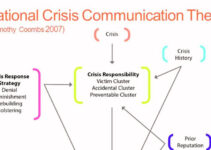Crisis communication outlines the strategic approach that the company employs to respond to difficult situations and business disruption. Such disrupted events pose a significant challenge to the company and threaten to jeopardize the trust and confidence of employees. However, it provides clear step-by-step information and guidelines for employees on how to move forward in case of uncertainty. Today, we’ll discuss organizational crisis communication; key elements, benefits, role of leadership, and strategies for crisis communication of companies.
Types of Crisis Events
- Employee retention issue when a mass volume of employees leave the organization or are laid off
- Recalling the product that may harm people and customers
- Unethical scandals of employees like bribery, contract violation, corruption, and sexual harassment
- Accidents and injuries of employees in the workplace
- Cyber-security threat and violation
Elements of Crisis Communication
- Clarity – communicating the company’s position consistently at different levels of the company
- Empathy – using an empathic and humble tone and language toward the employee’s issues and concerns
- Concern – managing the concerns, safety, and well-being of employees due to various issues impacting them personally
Benefits of Crisis Communication
- Preparing ahead of time
- Ensuring business continuity
- Positive impact on employees, business, and brand
Role of Leadership in Organizational Crisis Communication
The role of leadership and top management in organizational crisis communication is highly critical. Employees want to hear from the top management while going through difficult and challenging situations. However, it makes them feel included in the team by providing them safe space to share their unique experiences and perspectives.
- Carefully and openly listening to the concerns of employees and team members
- Directly approaching the affected employees in difficult and crisis situations and giving them the opportunity to have an open dialogue
- Leadership should ask employees a simple question “How they could help them reduce their suffering”
- Connecting and engaging with employees and offering them additional supportive resources and other support system
Strategies for Organizational Crisis Communication
Let’s discuss the top strategies and practices for organizational crisis communication are as follows;
Focus on Self-Care
If the disruption and crisis situation has affected employees personally, then the company’s managers and leaders should give sufficient to their employees to thoroughly process their emotions. It means giving them a day off and a rest day. In fact, they should encourage them to take care of their health, communicate, engage in health activities, collaborate, and as for support.
Follow-up Communication
Crisis communication is a continuous and ongoing process, rather than communicating at once and then going silent. When employees and team members are going through a critical situation, managers should regularly communicate with them to earn their trust and confidence. Rather than just checking the list of paying a visit to the employees; and then completely forget about it later on.
Context of Crisis or Change
It is highly significant for the managers and leaders to give context and explanation for the change event or the crisis situation. The human mind wants reasons and explanations for the things happening around them.
Right Communication Channel
Instead of relying on one communication channel; change and crisis managers and leaders should employ multiple communication methods. In some cases, social media commenting, emails, and texting aren’t sufficient; they should employ multiple channels of communication. They should reach out to their employees and have one-on-one discussions to have an open dialogue and discussion with them.
Crisis Communication Plan
Change leaders and managers should develop a comprehensive communication plan to get their crisis communication message across as soon as they can. Their focus should be on evolving their crisis communication message and actively listening to their affected employees. Some of the key elements of an effective crisis communication plan are as follows;
- Setting goals and objectives for the crisis communication plan
- Know the targeted stakeholders that you are going to communicate and craft the communication message accordingly
- Streamlining communication messages with team members and the company’s leadership
- Plan for disseminating and distribution of information at different levels
- Answering frequently asked questions of employees in the communication message
Effective Communication of Managers
The company’s management should conduct training programs for their first-line managers and supervisors on how to approach the employees and share the message in difficult and crisis situations. They should provide them with the toolkit of suggested answers to the FAQs, key messages, and discussion tips. It improves their skills and expertise in managing difficult situations.
Conclusion: Crisis Communication for Organizations |Strategies for Crisis Communication
After an in-depth study of organizational crisis communication; we have realized that crisis communication is highly significant for managing the difficult situation. If you are learning about the crisis communication plan of the company; then you should keep in mind the abovementioned strategies; key elements; benefits, and role of leadership in the disrupted situation to manage the morale of employees.
Ahsan is an accomplished researcher and has a deep insight in worldly life affairs. He goes Live 3 days a week on various social media platforms. Other than research writing, he’s a very interesting person.


